Roman Bronze Works, now operated as Roman Bronze Studios, is a bronze foundry in New York City. Established in 1897 by Riccardo Bertelli, it was the first American foundry to specialize in the lost-wax casting method, [1] and was the country's pre-eminent art foundry during the American Renaissance (ca. 1876-1917).[ citation needed ]
Bertelli was a chemical engineer from Genoa who combined his skill in chemistry with his interest in art in starting a foundry. [2] The foundry trademarked its namesake, Roman Bronze Works in 1900. [3] In 1908, the foundry built a home and studio for sculptor Harry Merwin Shrady at White Plains, New York. It was added to the National Register of Historic Places in 1982 as the Leo Friedlander Studio. [4] Long a sub-contractor to Louis Comfort Tiffany's Tiffany Studios, the foundry moved in 1927 to Tiffany's red brick factory in Corona, Queens, New York. [5] The General Bronze Corporation purchased the Roman Bronze Works in 1928. [6] [7] This ownership lasted for twenty years, up until 1948, [6] [8] during which it produced some of its finest bronze artworks from sculptors such as Paul Manship and Rene Chambellan to Lee Lawrie. [9] [8] [7]
The foundry's mold makers, casters, chasers and finishers, and patinaters cast sculptures from plaster and terra cotta models provided by sculptors. They also scaled down monumental and other finished works for editions of collectors' bronzes, allowing works by Daniel Chester French, Augustus Lukeman [10] and Augustus Saint-Gaudens to ornament a private library or drawing room. From 1898, Frederic Remington worked exclusively with Roman Bronze Works, as did Charles M. Russell. Remington bronzes were being cast by Roman Bronze Works as late as the 1980s. [11] Roman Bronze Works was purchased in 1946 by Salvatore Schiavo, whose father had worked at the foundry since 1902. His nephew, Philip J. Schiavo, the grandson of the first Schiavo, was the president of the foundry until its closing. [11]
The Heisman Trophy was originally made by Dieges & Clust in New York (and later Providence, Rhode Island) from its inception in 1935 until 1980, when Dieges and Clust was sold to Herff Jones.[ citation needed ] However, for a time until at least 2008, the Roman Bronze Works cast the Heisman Trophy statues awarded annually to the best college football player and his university. [12]
After the foundry closed, original plaster models of major works by American artists Frederic Remington, Daniel Chester French, Charles Russell, Bessie Potter Vonnoh and Anna Hyatt Huntington were auctioned off in New York on September 17, 1988. [13] Some of the molds were moved to warehouses in Copiague, New York, under the aegis of American Art Restoration, Inc. [14]
The business archives were preserved and are now at the Amon Carter Museum Library in Fort Worth, Texas. [15] In 2002, Schiffer Publishing released a book about Roman Bronze Works, A Century of American Sculpture; The Roman Bronze Works Foundry, written by Lucy D. Rosenfeld and based on the firm's ledgers and archival photographs at the museum.
Brian Ramnarine, who worked at Roman Bronze Works and opened his foundry in Queens (Long Island City) NY under the name Empire Bronze Art Foundry, was charged in Manhattan Federal Court in November 2012 with an $11 million scheme to sell an unauthorized casting of a work by Jasper Johns. [16] [17] [18] He was arraigned in October 2002 on charges of grand larceny, falsifying business records, scheme to defraud and criminal simulation. In February 2003 he pleaded guilty to making unauthorized copies of sculptures, agreeing to pay $100,000 in restitution. [19]
Artists who had works cast by the Roman Bronze Works include: [20]
Roman Bronze Works had significant partnerships with the following artists:
{{cite book}}: CS1 maint: location missing publisher (link)
Bronze is an alloy consisting primarily of copper, commonly with about 12–12.5% tin and often with the addition of other metals and sometimes non-metals, such as phosphorus, or metalloids such as arsenic or silicon. These additions produce a range of alloys that may be harder than copper alone, or have other useful properties, such as strength, ductility, or machinability.

Lee Oscar Lawrie was an American architectural sculptor and an important figure in the American sculpture scene preceding World War II. Over his long career of more than 300 commissions Lawrie's style evolved through Modern Gothic, to Beaux-Arts, Classicism, and, finally, into Moderne or Art Deco.

Paul Howard Manship was an American sculptor. He consistently created mythological pieces in a classical style, and was a major force in the Art Deco movement. He is well known for his large public commissions, including the iconic Prometheus in Rockefeller Center and the Celestial Sphere Woodrow Wilson Memorial in Geneva, Switzerland. He is also credited for designing the modern rendition of New York City's official seal.

Frederic Sackrider Remington was an American painter, illustrator, sculptor, and writer who specialized in the genre of Western American Art. His works are known for depicting the Western United States in the last quarter of the 19th century and featuring such images as cowboys, American Indians, and the US Cavalry.

The history of sculpture in the United States begins in the 1600s "with the modest efforts of craftsmen who adorned gravestones, Bible boxes, and various utilitarian objects with simple low-relief decorations." American sculpture in its many forms, genres and guises has continuously contributed to the cultural landscape of world art into the 21st century.
Hartley Burr Alexander, PhD (1873–1939), was an American philosopher, writer, educator, scholar, poet, and iconographer.

Giuseppe Moretti was an Italian émigré sculptor who became known in the United States for his public monuments in bronze and marble. Notable among his works is Vulcan in Birmingham, Alabama, which is the largest cast iron statue in the world. On a personal level, Moretti was "known for his eclectic personality and for always wearing a green tie," but professionally, is claimed to be "the first man to use aluminum in art." Moretti enjoyed some celebrity in his lifetime, and was a friend of famed Italian tenor Enrico Caruso. It is even reported that the singer repeatedly praised Moretti's voice.
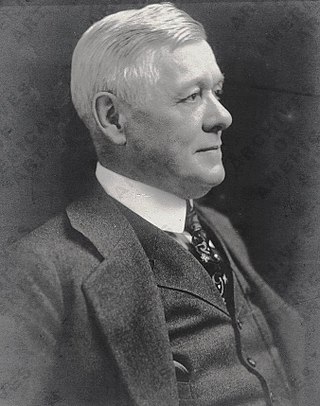
John Massey Rhind was a Scottish-American sculptor. Among Rhind's better known works is the marble statue of Dr. Crawford W. Long located in the National Statuary Hall Collection in Washington D.C. (1926).

Atlas is a bronze statue in Rockefeller Center, within the International Building's courtyard, in Midtown Manhattan in New York City. It is across Fifth Avenue from St. Patrick's Cathedral. The sculpture depicts the ancient Greek Titan Atlas holding the heavens on his shoulders.
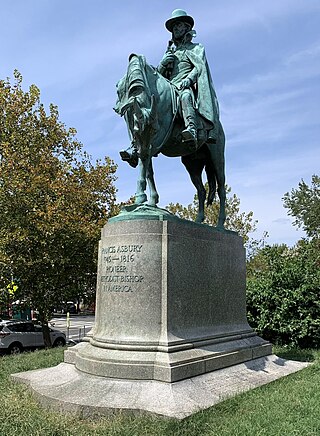
Francis Asbury, also known as the Francis Asbury Memorial, is a public equestrian statue, by American artist Augustus Lukeman, located at 16th Street and Mt. Pleasant Street, Northwest, Washington, D.C., in the Mount Pleasant neighborhood.
A. Contini & Son was a fine art plaster mold casting firm founded by Italian American Attilio Contini and his son Cesare. Based in New York, New York, United States, A. Contini & Son made plaster molds for sculptors around the world including James Earle Fraser, Ivan Meštrović, Herbert Haseltine, A. Stirling Calder, Adolph Weinman, among others. It was the first casting facility of its kind in the United States.
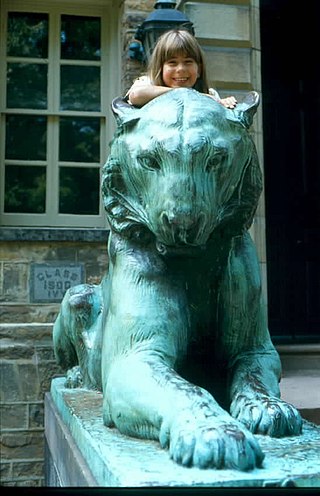
Jno. Williams, Inc. was a prominent American foundry. Located in New York City, it was established in 1875, incorporated in 1905, and dissolved in 1956.

The Modern Art Foundry is an historic foundry in Astoria, Queens, New York, founded in 1932 by John Spring. His descendants continue to operate the business in what used to be the carriage house of the Steinway Mansion.
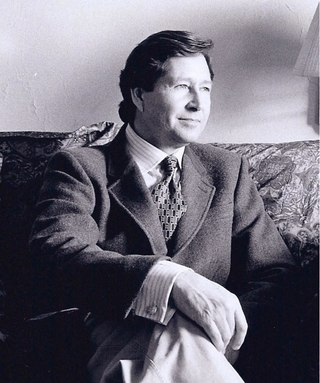
Lee Harold Letts, American artist, sculptor, painter and goldsmith, is primarily known for his bronze sculptures of birds and animals. His practice is based on the principles of traditional studio craftsmanship, as well as the importance of studying under a master in the manner of the American artists who studied at the École des Beaux-Arts in Paris. The beauty of nature is the primary theme of his artwork. He holds a unique position as a bronze sculptor trained as a goldsmith.
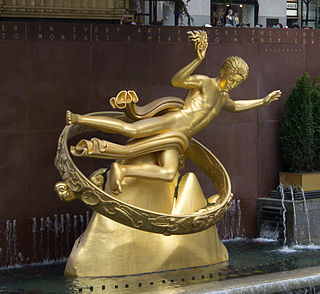
Prometheus is a 1934 gilded, cast bronze sculpture by Paul Manship, located above the lower plaza at Rockefeller Center in Manhattan, New York City.
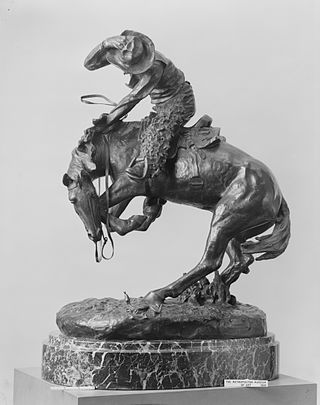
The Rattlesnake is an equestrian sculpture by American artist Frederic Remington. The bronze sculpture was one of Remington's most popular, after The Broncho Buster, and it has been described as Remington's own favorite sculpture.

George Washington is an outdoor equestrian statue by the Scottish-American sculptor J. Massey Rhind located in Washington Park in Newark, New Jersey. It depicts General George Washington saying farewell to the troops of the Continental Army on November 2, 1783, and was dedicated on the anniversary of that event in 1912.
The General Bronze Corporation was an American metals fabricator, primarily of bronze and aluminum, and the most recognized company in the architectural bronze and aluminum industry during the first half of the 20th century. It was known for New York City's Seagram Building on Park Avenue designed by Mies van der Rohe, the Atlas and Prometheus bronze sculptures in Rockefeller Center, the bronze doors for the United States Supreme Court, Commerce, and Department of Justice Buildings in Washington, DC, the aluminum windows for the United Nations Secretariat Building and Chase Manhattan Bank Building, and for the design of the Arecibo Radio Telescope suspension system. As American cities evolved, the need for architectural and sculptural bronze increased. An innovative and progressive company, General Bronze Corporation stepped up to supply that demand. It became the dominant leader in the architectural bronze industry for both bronze fabrication and bronze sculpture, and aluminum fabrication in the United States for over three decades. In the early 1950s, General Bronze was also at the forefront of the fledgling television radio industry as a major manufacturer of radio antennas, and one of the first to introduce automatic motorized antennas for the automobile industry. General Bronze's Brach Manufacturing subdivision offered electronics to the early radio telescope field, such as the Green Bank Telescope of the National Radio Astronomy Observatory in Green Bank, West Virginia and the Arecibo Radio Telescope.
John Polachek was an industrialist, known for founding the General Bronze Corporation in New York City.